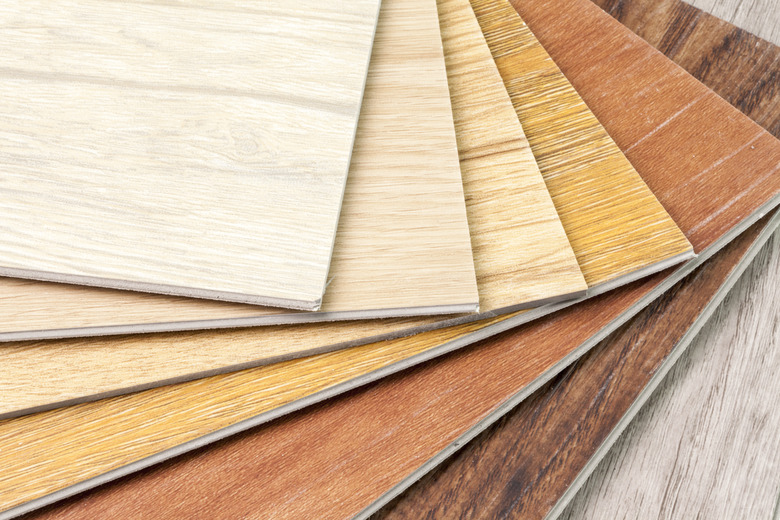How To Put Laminate Flooring On The Wall
We may receive a commission on purchases made from links.
So you're thinking of using laminate flooring on walls. Well... why not? Designers use other types of flooring as wall coverings, and they use certain types of wall paneling on the floor. So, while covering an accent wall – or even an entire room – with laminate flooring may be an unusual idea, it isn't outrageous. In fact, you can think of its very unconventionality as a design feature.
The Best Method to Stick the Flooring to the Wall
The Best Method to Stick the Flooring to the Wall
Laminate flooring retailers agree that using laminate flooring on walls is a good idea. They also agree that you should hang it only on a wall that is perpendicular and not on a sloping wall or ceiling.
The retailers have different ideas about how to adhere it, though. You can use silicone caulk, and you could improve on that idea by using construction adhesive. But the problem with this approach is getting the planks to stay put while the adhesive sets.
Better yet, you can also use wood flooring tape. For this tape to work, the wall must be perfectly flat, with variations no greater than 3/16 inches, no peeling paint and no crumbling drywall. Don't try to hang laminate flooring from a wall covered with wallpaper or wood paneling.
Some Considerations Before You Start
Some Considerations Before You Start
You need laminate planks with overlapping end joints, not interlocking ones, because once the planks are flat, you can't tap them lengthwise. If you've chosen a style that only comes with interlocking end joints, cut the tongue and groove off the end of each plank with a utility knife before you start.
The flooring needs 2 to 3 days to acclimate to the room conditions to prevent it from shrinking and forming gaps. Just pile the unopened boxes on the floor in the room where you're going to install it and give it time to feel at home.
Don't use flooring with a cork backing, because it doesn't stick well to the tape. The good news is that flooring without a backing is generally less expensive. Because of moisture that could prevent adhesion of the tape, it isn't a good idea to use laminate flooring on bathroom walls unless you use an adhesive along with the tape.
How to Make a Wood Flooring Accent Wall
How to Make a Wood Flooring Accent Wall
First, lay strips of tape vertically on the wall, spacing them by 8 to 12 inches. Leave a 2-inch gap from the bottom of the tape to the floor. Then, place a straight 2-by-4 board, long enough to span the wall, flat on the floor next to the wall, leveling it by putting shims underneath it. This must be done carefully, because it will determine how straight you install the flooring.
Install the planks with the groove edge facing up. The groove edge is the one with the underlap. The one with the overlap is the tongue edge. This should face down. After, hang the first plank with its end 1/4 inch from the edge of the wall. Set it on the 2-by-4 and press it against the tape. Align it carefully, because once you press it into place, it's there for good.
Install the next plank in that row the same way, making sure that the end joint is tight before you press it into the tape. Keep going until you reach the other end of the wall, then cut the last plank to length, allowing for a 1/4-inch gap. You can use the offcut to start the next row. Continue the next rows by clicking the planks into the ones in the previous row. Stagger the end joints by 8 to 12 inches to create a random pattern. No two joints should align.
Finish up by installing the baseboards and trimming out the edges of the wall with quarter-round, corner trim or, if you prefer, something more elaborate.
